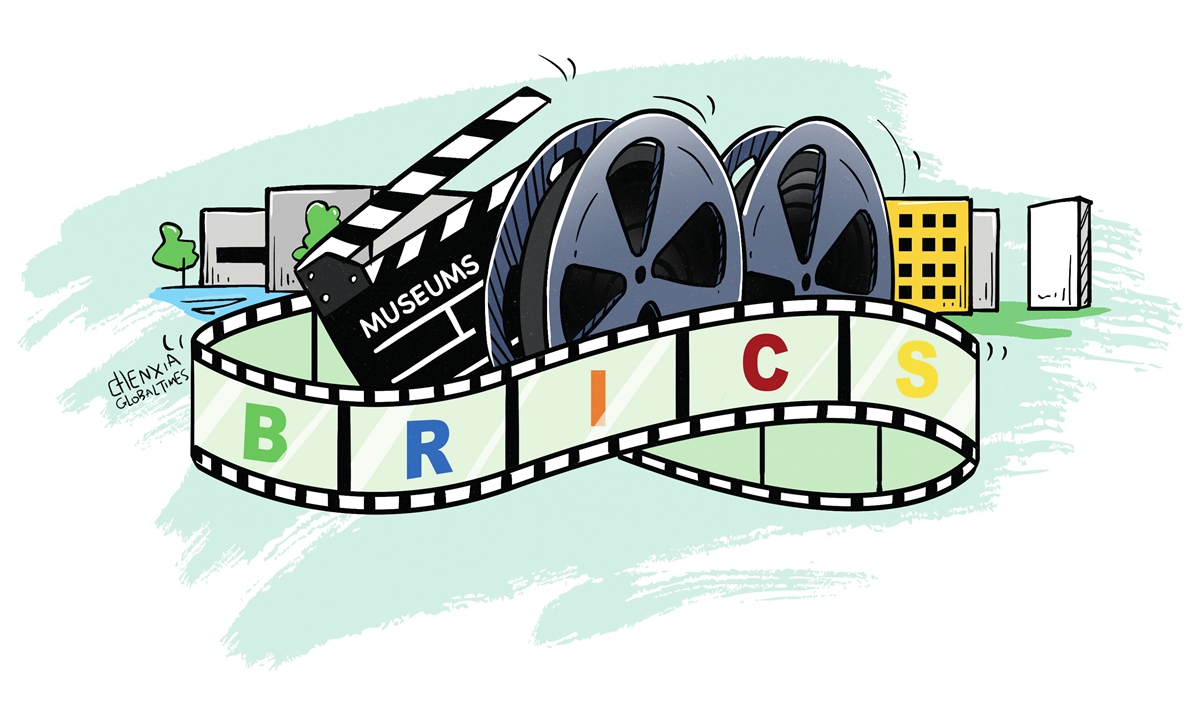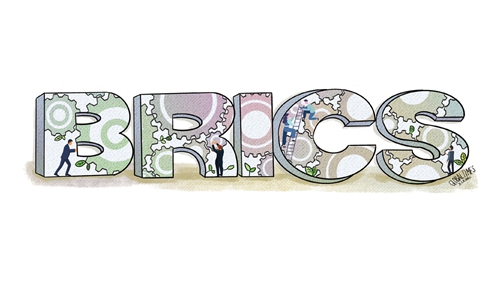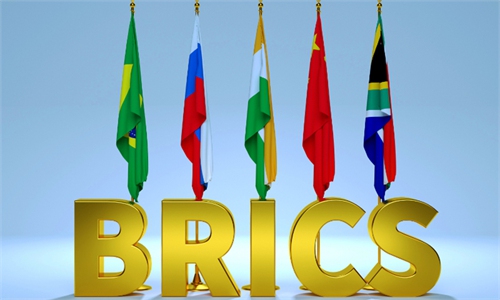ARTS / FILM
BRICS cultural appreciation strengthened

Illustration:Chen Xia/Global Times
Museums are important channels for protecting and passing on culture, and they are bridges connecting the past, the present and the future. For each country, its museums serve as a cultural icon and bear rich historical and cultural connotations, and they are a window for international audiences to understand its history, traditional culture, and current development. All the five countries of BRICS boast rich and profound cultures promoted through many museums. The documentary selects five representative museums of these countries, namely Brazil's Institute Inhotim Contemporary Art Museum, India's the City Palace Museum, Russia's Konstantin E. Tsiolkovsky State Museum of the History of Cosmonautics, South Africa's Heart of Cape Town Museum and China's Liangzhu Museum.Initiated by China, the documentary series was co-produced by the five countries. The five episodes display the various histories, culture, and local customs of each nation to open a dialogue between civilizations, show cultural diversity and promote mutual learning among the countries.
The five directors chose people related to the museums so they can tell stories from their perspectives.
China's episode tells the story of how the local art students designed the torch of the Hangzhou Asian Games, recounting the stories of archaeological researchers, artisans at jade carving workshops, and artists involved in 3D architectural recovery. It also delves into research on the development of the Liangzhu civilization from different perspectives, unveiling the unique and splendid Chinese civilization that has lasted for more than 5,000 years.
Brazil's Inhotim Museum selects four ordinary Brazilians - a chef, a gardener, a business manager and a project analyst - who tell their own experiences of working in museums located in an area where people used to make their living from agriculture and mining. The birth of the largest contemporary outdoor art museum has brought about tremendous changes to local people's life.
Russia's Konstantin E. Tsiolkovsky State Museum of the History of Cosmonautics introduces the proud and glorious aerospace history of Russia through the perspective of actors rehearsing for a Tsiolkovsky play - the pioneer of Russian astronautics, museum guides and planetarium technicians.
India's City Palace Museum reveals the impact of India's continuous changes on its traditions and people's persistence from the perspectives of tourist guides, artists, security guards and local dancers.
Finally, South Africa's Heart of Cape Town Museum, which was built in 1967 in commemoration of a heart transplant surgery. The documentary depicts the significance of keeping the memory of this surgery alive by interviewing different groups of people, including a doctor and patients.
As indicated in the title My Museum Story, "My" replaces introductions to the relics and construction of the museums, turning the documentary into a platform to introduce cultural inheritance. The series breaks from the traditional framework in which only cultural relics and architecture are the focus for imparting historical and technological knowledge, shifting the focus from "objects" to "people."
As part of "cultural diplomacy," the exchanges via documentaries promote friendship and understanding, build consensus between different countries, and can become a channel of communication and mutual learning between civilizations.
The co-production and joint broadcast of this documentary will help enhance cooperation and promote friendship between the peoples of BRICS countries.
Back during the 11th BRICS Summit held in 2019, the first co-produced documentary Kids and Glory debuted globally. Directed by Chinese director Lu Chuan together with directors from the other four countries, the series, centered around children and sports, tells the real story of how young soccer and cricket players worked hard to fulfill the same dream together. As a sideline event of the Summit, the documentary screening, together with other cultural forums, have turned into a pillar of cultural exchanges held through the cooperation of BRICS countries, which also conforms to the consensus of their leaders.
In addition, documentary diplomacy is an important way of passing on goodwill, deepening friendship and facilitating people-to-people exchanges. Its significance not only lies in delivering information, cultural images and values, but also in playing a bigger role in the interactions taking place behind the documentary.
The co-production and joint broadcast of the two documentaries have become a symbol of friendship between BRICS countries, and help strengthen its cohesion and promote BRICS ideas with a view on beefing up the overall cultural soft power of the five BRICS nations.
Museums are a shared treasure of humanity that deserves to be cherished by all.
As a window on history, culture and civilization, museums deserve to be fully utilized so that they can inspire more excellent works that reflect cross-cultural value. Documentaries, like a mirror of the times and humanity, should also record and present matters of common concern to all mankind, collect shared values, and promote mutual learning between different civilizations.
The author is an associate professor of the Television School at the Communication University of China. life@globaltimes.com.cn


